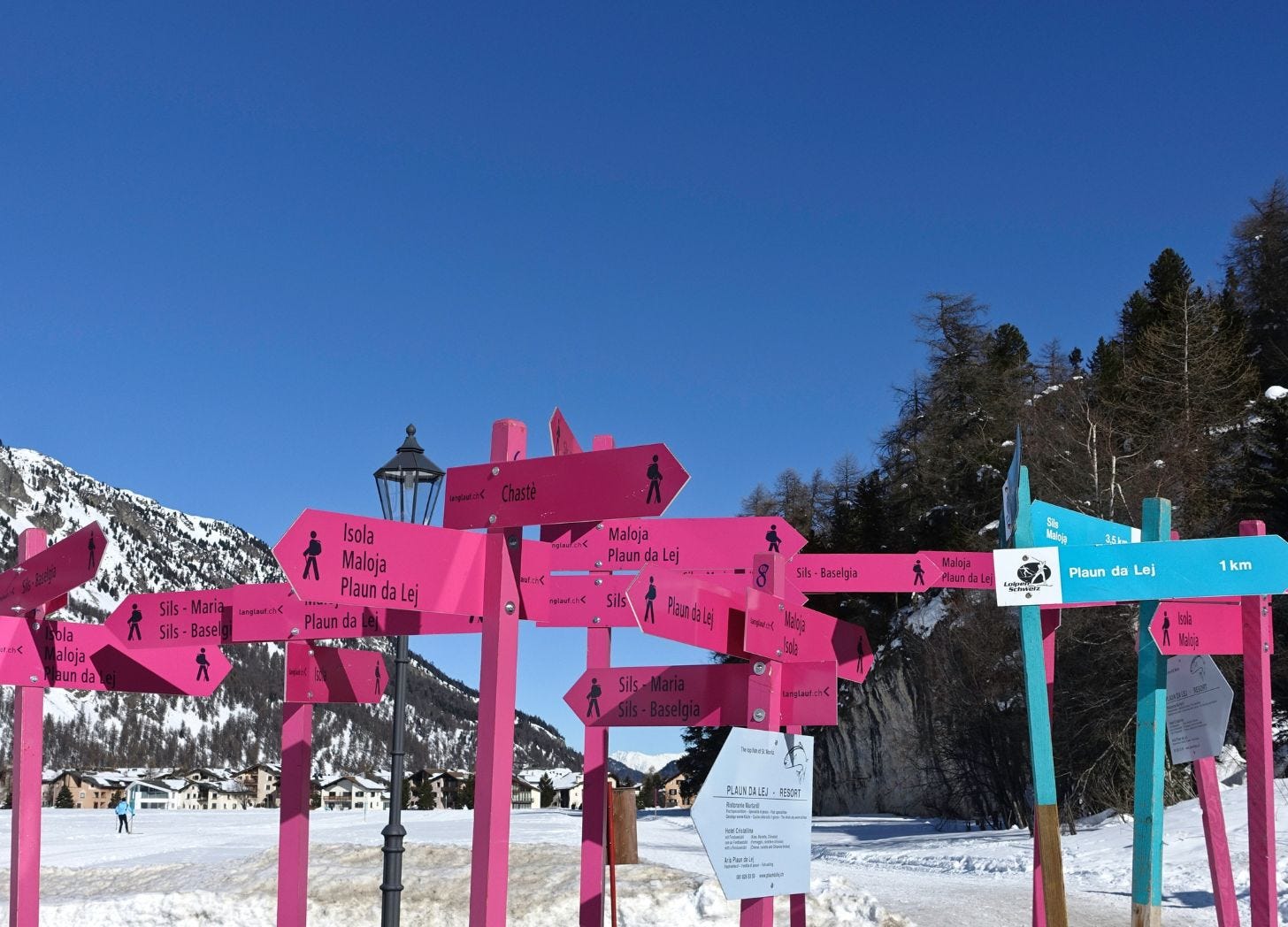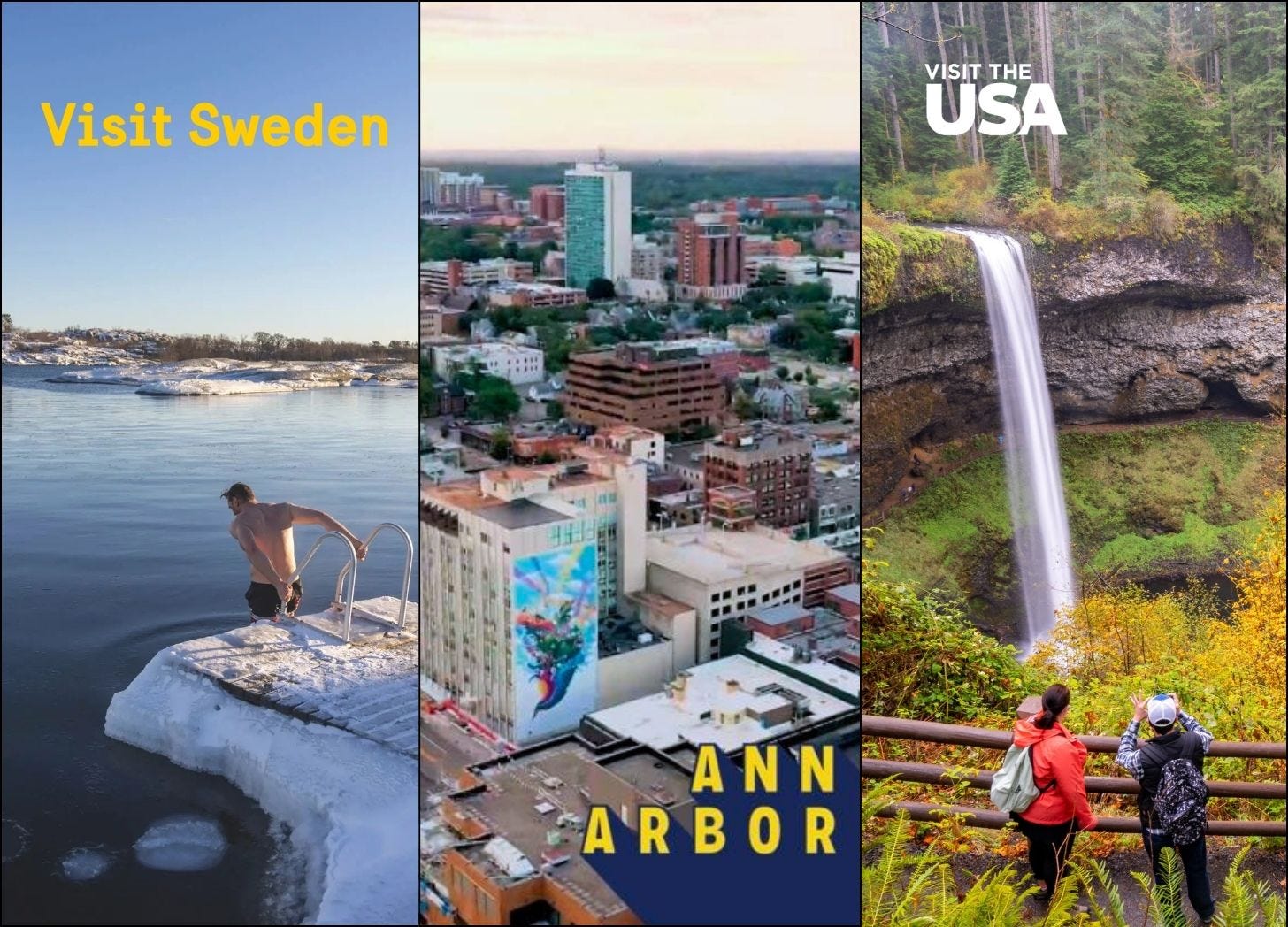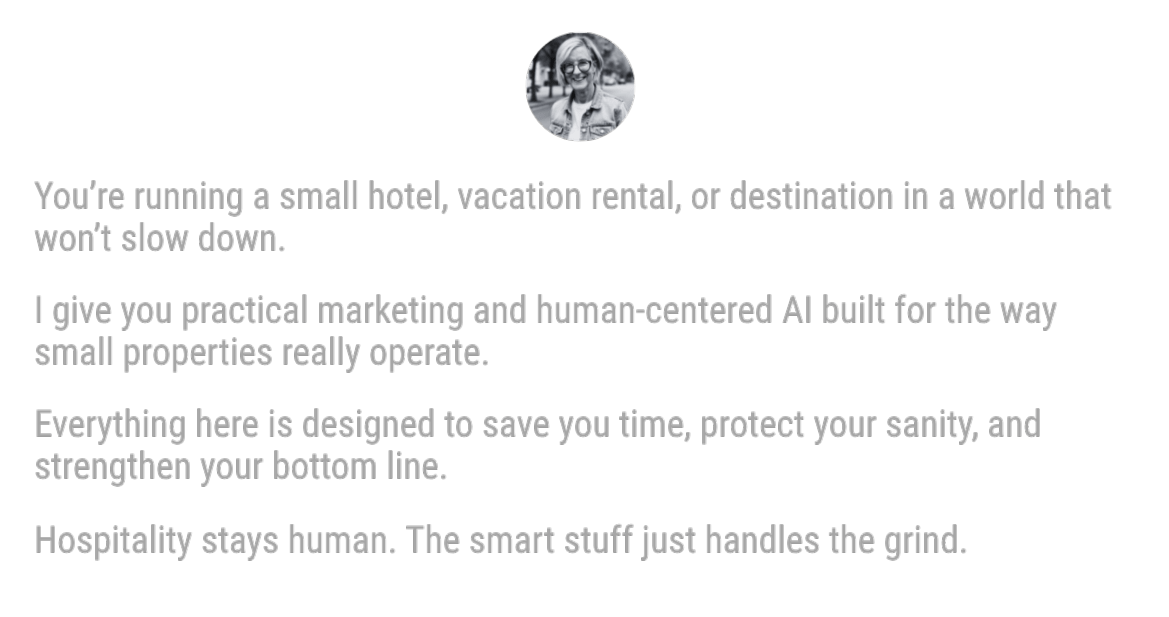Destination Sunday: The Real Reason Destinations Lose Bookings
And Nobody Talks About It
Most destinations don’t wake up thinking, “We need to confuse people.”
They think about views.
They think about stories.
They think about what will make someone stop scrolling.
That makes sense. That’s the job most teams think they’re doing.
But what travelers actually decide on isn’t beauty. It isn’t even inspiration.
It’s comfort.
It’s the quiet feeling of, “I get this place,” long before they click “Book.”
That isn’t luck.
That isn’t branding.
That is memory architecture.
Memory architecture is the invisible structure that helps a traveler quickly recognize, trust, and remember a place.
These same patterns show up everywhere. Not just in countries or big cities.
Heritage tourism, adventure travel, and urban destinations all rely on the same brain shortcuts. Travelers use collective memory (what a place is known for) and cognitive memory (how easily it makes sense) to decide where to go.
Whether someone is choosing a historic town, a mountain trail, or a global city, the question is the same:
Does this feel safe to choose?
The bottom line is simple:
Does this place feel familiar and trustworthy — or confusing and risky?
Most destinations don’t realize they’re shaping that decision every day.
Why This Matters Now
This isn’t about trends or better campaigns.
It shows up where operators actually feel it: missed bookings, shorter attention, quieter exits from the funnel.
Expedia’s research showed that even small moments of confusion cause travelers to abandon decisions long before price becomes the issue. Their data also shows that removing small points of confusion increases conversion by double digits, without increasing ad spend.
They don’t complain.
They don’t explain.
They simply disappear.
Across travel and ecommerce, industry data consistently shows that reducing friction can lift conversion by 10–20% without spending a single additional dollar on ads.
That isn’t a marketing win.
It’s operational leverage.
Destinations that feel easy to understand convert faster.
And speed is a margin advantage.
Memory architecture isn’t a marketing layer.
It’s a revenue protection layer.
How Travelers Actually Decide
Most strategy decks are built around the way we wish guests behaved.
They don’t.
They don’t follow funnels.
They follow fear.
They bounce between Google, Instagram, OTAs, maps, and reviews trying to eliminate risk, not find inspiration.
They’re not comparing poetry.
They’re checking for red flags.
They’re asking one quiet question the entire time:
“Does this feel safe?”
When your language, images, promises, and details match everywhere, their body relaxes.
When they don’t, they hesitate.
And hesitation almost never shows up as feedback.
It becomes a closed tab, a lost booking, and a report you’ll never see.
This isn’t just a destination problem.
Small hotels, boutique inns, and short-term rentals live this same moment every day.Different scale. Same nervous system.
Guests don’t just evaluate places. They evaluate whether they feel safe choosing you.
From Persuasion to Stabilization
Most of us were taught to sell travel like a commercial.
Awareness.
Interest.
Desire.
Action.
That model assumes guests are waiting to be convinced.
They aren’t.
They’re waiting to feel safe.
The destinations turning browsers into bookers stopped trying to persuade.
They started removing reasons to hesitate.
That’s stabilization.
Recognition means someone understands you quickly.
Reassurance means they stop second-guessing.
Repetition means they stop searching elsewhere.
Reservation becomes the easiest next step.
This isn’t branding.
It’s infrastructure.
The Moment You Start Losing Guests
This isn’t theoretical.
This is the exact moment revenue quietly walks away.
Visit Sweden — “Spellbound by Sweden”
When Sweden aligned audio, visuals, and cultural storytelling, recognition rose by 16% and intent followed. Not because it got louder. Because it finally felt like one place instead of five disconnected stories.
The Swedish Number
People didn’t remember it because it was clever.
They remembered it because it sounded like Sweden. It felt human. It felt safe.
Ann Arbor — “This Is Where You Belong”
They didn’t add campaigns.
They stopped letting partners improvise.
Language synced. Signage matched. Visitor materials aligned. Guests felt confident before they ever arrived.
Brand USA — “America the Beautiful”
They didn’t move faster.
They stopped drifting.
AI wasn’t used to create more. It was used to prevent mismatch. To stabilize language, visuals, and promises before guests ever felt the cracks.
Quick gut check:
What Small Teams Get Right Without Trying
A regional DMO with almost no paid budget stopped chasing campaigns.
No rebrand.
No logo refresh.
They gave every hotel, restaurant, and attraction three shared experience phrases and asked partners to stop improvising.
Within one season:
Website time-on-site improved
Clarification emails dropped
Frontline teams reported fewer confused visitors
Nothing about it looked impressive.
Everything about it worked.
What This Actually Looks Like for Small Destinations and Chambers
You don’t control OTAs.
You don’t control influencers.
You don’t control when partners update listings.
Small destinations don’t win by control.
They win by gravity.
They make the aligned path easier than the chaotic one.
Instead of brand books → paste-ready templates
Instead of guidelines → copy-and-use blocks
Instead of enforcement → effort reduction
This isn’t authority.
It’s facilitation.
The teams that influence OTAs and big partners don’t send long rules. They send quarterly “paste packs” and easy refresh emails that make correct language the easiest option.
The Political Truth No One Says Out Loud
Boards don’t want new roles.
Volunteers burn out.
Partners don’t want to be corrected.
So the role isn’t called “Memory Architect.”
It’s called:
Coordinator
Facilitator
Partner Advocate
Same work.
Safer language.
Internal justification that works:
Alignment reduces complaints, shortens booking confusion, increases partner confidence, and drives more referrals.
That language keeps boards calm.
What Works When You Have No Formal Power
You don’t force alignment.
You make the right behavior easier.
“Please update your listing”
→ “Here’s paste-ready copy.”
“Your photos are off”
→ “Here are three shots guests respond to most.”
“Use our language”
→ “This wording converts better.”
This isn’t manipulation.
It’s friction removal.
And friction removal changes behavior.
The Messy Internal Moment Nobody Likes
Most teams already know things are fragmented.
They don’t fix it because it’s socially uncomfortable.
Marketing blames the website.
The website blames outdated toolkits.
Partners blame time.
Leadership blames budget.
Everyone sees it.
No one owns it.
High-performing destinations assign ownership of memory stability. Someone who makes sure things feel like the same place everywhere a guest looks.
A Simple Role Playbook (Light Version)
Assign one owner (part-time):
Monthly channel check
Quarterly partner paste-pack updates
One alignment conversation per month
Track: fewer confusion emails, shorter booking windows, reduced partner questions
This is operations work, not creative work.
A 30-Day Memory Architecture Rhythm
Week 1:
Compare website, Google, Instagram, and one OTA.
Week 2:
Choose one promise and align every touchpoint.
Week 3:
Standardize imagery.
Week 4:
Send partners paste-ready copy.
Repeat monthly.
Memory isn’t built in launches.
It’s built in rhythm people can actually maintain.
Where AI Fits (Quietly)
AI doesn’t tell your story.
It protects it.
It flags mismatches.
Surfaces drift.
Highlights broken details.
Not to go faster.
To go steadier.
The Moment Guests Quietly Walk Away
This is the part no one tracks.
When someone sees your destination for the first time, they don’t think in marketing language. They don’t think in funnels.
They feel something very fast.
Either:
“This makes sense. I trust this.”
Or:
“This feels off. I’m not sure.”
That decision happens in seconds, not minutes.
When it feels familiar, they move forward.
When it feels confusing, they disappear.
No complaint.
No bad review.
No feedback form.
Just a closed tab and a booking you never see in your reports.
That’s not a dashboard problem.
That’s a clarity problem.
The Real Advantage
Destinations don’t win by being perfect.
They win by being:
Predictable enough to trust
Consistent enough to remember
Clear enough to choose
Not louder.
Clearer.
That is memory architecture.
That is Destination Sunday.
Sources & Further Reading





